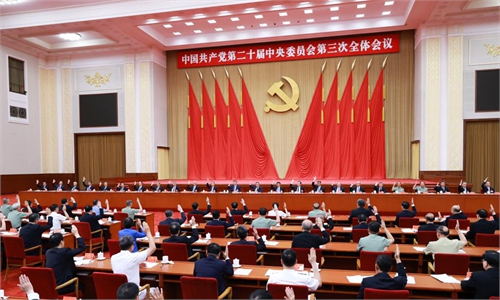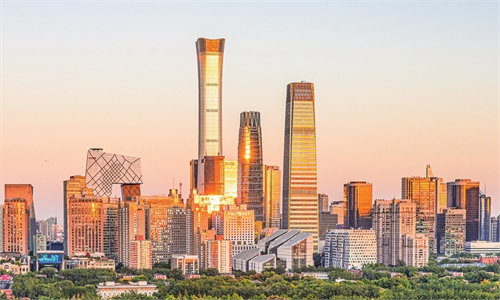
Illustration: Chen Xia/GT
Is China caught in a "liquidity trap?" The topic periodically makes headlines in Western media outlets. The answer would appear to be obvious. Such pessimistic views have been going around for decades, while those who peddle them never got it right.The latest example is a Reuters report claiming "China's slump hints at a unique liquidity trap." In terms of a liquidity trap, different economists may have different interpretations. Reuters quoted Paul Krugman as saying that in 1998 after Japan's property bubble burst, its economy slid into recession and monetary policy lost impact as interest rates were close to zero.
Indeed, many believe that a major characteristic of a "liquidity trap" is the failure of monetary policy. Such a trap may be real, but China will not fall into that trap.
China has kept its economy operating within a steady and reasonable range despite the grim global economy. The IMF earlier this month revised China's 2024 economic growth forecast up to 5 percent from 4.6 percent in April, highlighting its confidence in the economy.
We don't need to support the economy by shifting to an extremely loose monetary policy to release excessive liquidity into the economy.
The People's Bank of China (PBC), the central bank, on Thursday lowered the medium-term lending facility (MLF) interest rate to decrease the borrowing costs of the real economy. The operation came after the central bank on Monday cut several benchmark lending rates, aiming at increasing liquidity in the economy.
It is not surprising that some Western media outlets concentrated their firepower on criticizing China's monetary policy, at a time when the country is increasing liquidity by using tools including the MLF to strengthen counter-cyclical adjustments.
However, the magnitude of monetary easing looks modest. The government is unlikely to roll out a quantitative easing program to further release liquidity, given that the economy is still growing at a steady pace. A so-called "liquidity trap" is still far away.
What's more, from the perspective of Western economics, a liquidity trap occurs when investors and consumers hoard their cash rather than invest or spend it, even if a large amount of liquidity has been injected, but that term fails to explain China's economy. To prevent this kind of crisis, China is guiding more financial resources toward the real economy, especially the high-tech and high-end manufacturing industries.
China's investment in high-tech industries in the first half of 2024 rose 10.6 percent year-on-year. The number doesn't seem low. The robust economic indicators highlight the recent efforts of China to advance economic reforms and pursue high-quality development, while striving for greater self-reliance in science and technology, which is the core of the nation's development of new quality productive forces.
Some observers assert that China's economic growth "has peaked," drawing parallels to Japan's situation in the 1990s. This implies that China may face a "liquidity trap" in which monetary policy loses impact. This assessment is nothing more than a misconception.
China has one of the highest national savings rates in the world. Because of consumption habits that have been formed over decades, it would be quite difficult to make most Chinese people save less and spend more. However, that doesn't mean China will fall into a "liquidity trap." China, with its economic resilience and sound policies, will not repeat Japan's missteps in the 1990s.
Some Western economists lack an understanding of the Chinese economy. It is believed that China's continued urbanization will further stimulate the country's consumer potential. We have reasons to keep faith in China's economic growth.
China's economy saw many new growth points in 2024, and there are still many new highlights to look forward to this year. Many believe that a growth rate of about 5 percent is within reach.
The author is a reporter with the Global Times. bizopinion@globaltimes.com.cn



